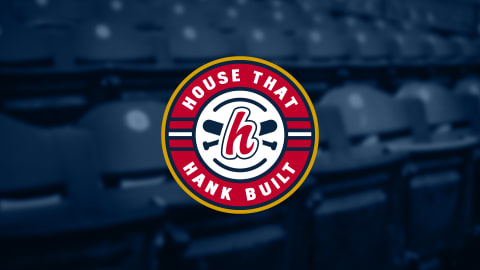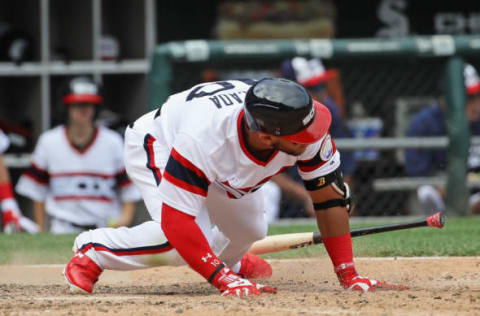Jeff Passan: Atlanta Braves farm system isn’t the best?


Ultimately, the answer of “who’s the best” will be answered on the field in the coming years, but right now there’s a robust argument going on about farm system ranks.
Within the past 2 weeks, two major reports about post-draft, post-trade-deadline farm system rankings have been released. One is favorable to the Atlanta Braves, the other slightly less complimentary.
Baseball America, August 3rd (most behind a paywall): Atlanta Braves #1, White Sox #2.
Jeff Passan/Yahoo Sports, Aug 11 (keep the volume down on your computer): White Sox #1, Atlanta Braves #2
Both evaluations rate these systems close to one another. Baseball America simply has a synopsis of their research from their free teaser:
1. Braves. The skinny: Our preseason No. 1 still has depth as well as impact talent. 2. White Sox. The skinny: Massive farm system makeover has White Sox nipping on Braves’ heels.
Even this, though, should excite Braves’ fans: ‘impact talent’. There’s a phrase that was eluding descriptions of the Braves’ farm, even in the last couple of years.
The real point of evaluating and comparing farm systems revolves around that: if you have impact talent, then you have players who should be major contributors at the major league level once they are ready for prime time.
Clubs without such minor leaguers will (for the most part) use their best as role players, utility options, relievers, bench bats. They have to wait for make shrewd trades or find free agents and sign them in order to improve their club.
That can work, of course, but it’s expensive and it’s a dice roll. Even many ‘premium’ free agents are often not deemed worthy of the huge contracts they command.
So with that, let’s look at Passan’s evaluation, which he introduces with this flair:
Hold your breath, dive into the muck of the discussion about which team boasts a better cache of players in the minor leagues and suddenly it will become abundantly clear that the combination of a sincerely interesting question and the insanity of baseball’s prospect culture provide a fertile atmosphere indeed for animus to form.
In other words, we like to argue about this topic. A lot.
After the Jose Quintana trade, Passan declared the argument to be over… that the White Sox had won.
He must have heard from more than a few Braves’ fans, for this judge re-opened the case… though ultimately coming to the same conclusion.
Let’s see what we can learn ourselves…

Wracking Opinions
Passan does admit that the entire realm of player evaluation is fraught with difficulty, error, subjectivity…. and as Braves’ head scout Brian Bridges once told me, there is always the inherent difficulty of seeing the true story on any player on any given day of observation.
The task is easier when you have a player in your own system and can see him every day, but that still doesn’t end the argument. Witness this Passan paragraph:
MLB.com’s ranking of the Braves system, for example, has outfielder Class A center fielder Cristian Pache as a slightly above-average fielder. The Braves believe Pache is the next Andruw Jones defensively, and that tracks with other organizations’ assessments of his glove, and, seeing as center field defense is among the most valued commodities in the sport today, Pache’s standing among the general prospect-watching population does not match that inside the game.
In other words, yes: we do still think that Jonathan Mayo and Jim Callis have a warped view of the Braves’ system since (among other reasons) others appear to think their view of Pache is flawed as well.
There’s a mention in his piece that some think Joey Wentz to be the system’s best pitching prospect… despite being unranked on major Top 100 lists. Luiz Gohara is getting a lot of love in some quarters, Allard in others. Obviously opinions vary wildly, but you would certainly think that such evaluations would speak highly of the Braves’ farm standing.
Beyond those snippets, Passan mentions this noteworthy bit: that the Braves ‘push their prospects like no other organization’ with more innings from their pitchers and faster promotions, but suggests this practice skews the board in terms of evaluations from others.
In other words, he thinks that the Braves are ‘cooking the books.’
Apparently Passan then chooses to re-level the argument by cutting back on the evaluations, while still declaring the pitching cache of Soroka, Anderson, Wright, Gohara, Wentz and Allard to be the “finest collection gathered by one team in years.”
Here’s the rub: if any given prospect were to be rushed to another level too soon, you would expect to see poorer performances, difficulty in managing struggles, and perhaps even burns-outs.
That’s just simply not happening with any of Atlanta’s Top 10… nor virtually any of their Top 20+ (no matter whose list you subscribe to).
Through 3 starts in AA Touki is setting a new career high in K/9
— Braves Reddit (@BravesReddit) August 14, 2017
...he's getting better as he's moving up
So anyone not doing particularly well?
- Travis Demeritte is having a down year at AA.
- Max Fried had an uneven campaign, though righted his ship enough to earn a promotion to the majors (2 outings, 3 innings, 0.00 ERA early on).
- Rio Ruiz wasn’t able to stick in the majors.
Excepting others facing nagging injuries, that’s about it… all others of any note are excelling. Honestly, that’s almost shocking – that most of a team’s top 20 or 30 prospects enjoying productive-to-great years at the same time.
On top of that, some have emerged in a big way: William Contreras and Drew Lugbauer are mentioned specifically by Passan. He doesn’t mention Ronald Acuna in that context, but clearly he has been the biggest break-out of them all. Alex Jackson‘s comeback has been good (.836 OPS at High-A), though AA adjustment has been slow (9 games/38 AB).
But now the pitching results in 2017 have been nothing short of amazing.

The White Sox
Passan gives the nod to the White Sox based on their premium position players and on the general/historical/statistical expectation that more position players will reach the majors than pitchers.
For the Pale Hosers, those are…
- Yoan Moncada. Of course… but a “warranted fear” is his strikeout rate. Honestly, if he ever fixes that he’ll truly be a beast.
- Eloy Jimenez. A lot of people seem high on him; I’m personally not one of them (obviously the White Sox were as he was their ‘prize’ for Jose Quintana). Though I don’t like MLB Pipeline for a lot of reasons, they rattle off a littany of potential issues with Jimenez.
- Luis Robert. Roughly a Top 40 player (MLB Pipeline #26; BA #45). He could be good, for sure (I wanted the Braves to get him), but oddly, the Sox started him in the Dominican Summer League at age 20. That doesn’t exactly scream ‘Top 100’ yet. (67AB, 22 walks, 21 K, 19 hits).
By MLB Pipeline’s reckoning, OF Blake Rutherford is their next position player, and there are no others until #10 Zack Collins (catcher). And for the record: I don’t even care how they Sox got these players – they have them, so that’s where the evaluation starts.
But where are these highly-touted position players? Micker Adolfo as mentioned? Maybe… but I’ll call that and raise you Kevin Maitan and Abrahan Gutierrez. Others? Not sure who they are at this point.
It just doesn’t make any sense: Passan admits that the Chicago pitching prospects have a problem with command – while saying (paraphrased) ‘that’s okay… not everybody can be Mike Soroka‘.
More from Tomahawk Take
- Atlanta Braves 2012 Prospect Review: Joey Terdoslavich
- Braves News: Braves sign Fuentes, Andruw’s HOF candidacy, more
- The Weakest Braves Homers Since 2015
- Atlanta Braves Sign Joshua Fuentes to Minor League Deal
- Braves News: New Year’s Eve comes with several questions about the 2023 Braves
How can he say such things and turn around and fail to admit that the Braves are at least the Sox equal in every way positionally:
- Albies and Moncada at second base
- Acuna and Jimenez as cf/corner outfielders
- Maitan and Adolfo (ss/of)
- A whole raft of Catchers and Collins
(Yes – Moncada beats out Albies; but the Braves would seem to win every other pairing at this point)
But overall, the Braves’ pitching has to put Atlanta over the top – and easily so when considering the whole package. It’s just strange to read Passan’s own words and not see him make that verdict.
Maybe I’m missing something. Maybe time will prove me wrong (and I initialliy was going to give the nod to Chicago a month ago). Maybe we’re just too much homers here. But after my own look…I still think the Braves are the best.